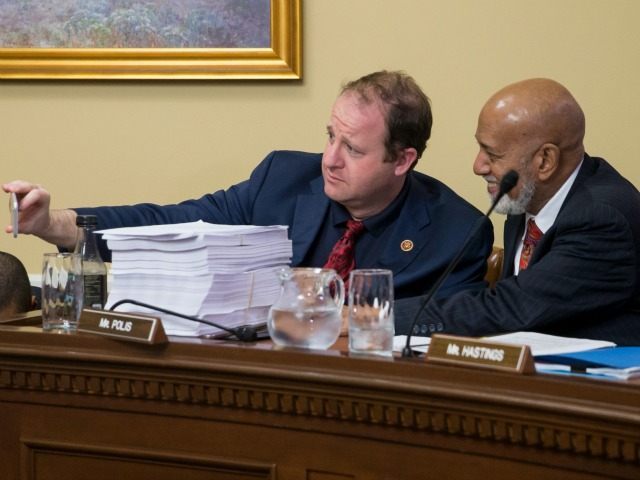From the Gang of 8, to Obamacare, to the Omnibus spending bill, Americans are fed up with lengthy bills rammed quickly through Congress.
The 2,000 page, $1.1 trillion Omnibus signed into law before Christmas fully funds Planned Parenthood, Obamacare, illegal executive amnesty, EPA overreach and the Syrian refugee program among other horrible organizations and programs. In response, I have introduced legislation to hit the brakes on runaway legislation: the Read the Bill Act. At a minimum, our constituents expect Members of Congress to read and understand legislation before taking a vote. The public also needs sufficient time to in order to communicate with their representatives.
The justifiable backlash from conservatives against the Omnibus has reinvigorated calls for House GOP leadership to restore “regular order” to funding the government: twelve spending bills brought forward one-by-one under open-amendment rules. Regular order is a first step toward restoring legislative sanity, but real process reform requires a “safety valve” which prevents leadership from jamming through massive bills at the last minute.
Currently, the House operates under the so-called “Three Day Rule.” This rule supposedly prevents a bill from being brought to the floor and voted on in the same day.
The public mistakenly thinks the Three Day Rule gives Members a minimum of 72 hours to review bills. House Leadership, however, often “complies” by introducing controversial legislation late Tuesday night and holding votes Thursday morning. Even so, sometimes Leadership overrides the fake Three Day Rule by passing a so-called “Martial Law” rule to allow same-day consideration of any bill. Only in Washington D.C. can politicians write a new rule to override another rule which they (temporarily) don’t want to follow.
We saw the fake Three Day Rule in operation with the Omnibus.
House Leadership introduced the Omnibus at 2:00 AM on Wednesday, December 16 and we voted that Friday at 10:00 AM. In other words, we had only 56 hours to review 2,000 pages of legislation. My bill would stop this madness first by requiring 24 hours review time for every 100 pages of legislative text with a guaranteed minimum of 72 hours for every bill.
It also clarifies that “hours” means “working” hours so Leadership can’t run the clock during weekends and days when Congress is out of session. The longer the bill, the more time Members and the public would have to understand what’s in it. These time requirements would have forced House Leadership to wait a calendar month between dropping the 2,000 page Omnibus and scheduling the final passage vote. I have no doubt the Omnibus would have died if the public had a full week to rally against it, let alone 30 days.
To ensure Leadership’s compliance, the Read the Bill Act includes an enforcement procedure which would invalidate any law passed using fast-track procedures. It creates a cause of action for Members – or even taxpayers – to sue and make sure such laws have no force or effect.
Reading 100 pages a day doesn’t seem like much.
However, actually understanding legislative text is equivalent to deciphering hieroglyphics. It’s not just the length of bills, but also their sheer complexity – riddled with mind-numbing jargon, legalese, and bureaucratic gobbledygook – which keeps everybody in the dark.
For example, two seemingly innocuous short provisions in the Omnibus (Sections 601 and 602) give a partial bailout for Puerto Rico. Of course, these two sections don’t say: “U.S. mainland taxpayers shall provide an $865 million bailout to Puerto Rico.” Instead, the Omnibus legislative text amends eight paragraphs, subparagraphs, clauses and sub-clauses in a completely different bill – the (amended) Social Security Act of 1935 – and three other obscure provisions in the 2009 Obama stimulus bill to achieve the same purpose.
Analyzing half-page provisions shouldn’t take hours and a law degree. We don’t just need more time; we need bills that are readable. Members cannot do their jobs without readable legislation, nor can our constituents hold us accountable.
The Read the Bill Act requires that all bills include a comparative print which shows changes made to all other laws. Comparative prints are similar to the “track changes” functions used in everyday word processing programs. The House is already moving toward mandating more readable legislation. In fact, new House Rules already require comparative print appendices, but only for bills passed out of committees. The Read the Bill Act expands the existing readable legislation requirement to all legislation considered on the floor – even 2,000 page bills drafted in secret with zero committee involvement.
I encourage my House colleagues to join with me to start a better process which would, in turn, lead to better legislation: short, readable, and with plenty of time to digest it.

COMMENTS
Please let us know if you're having issues with commenting.